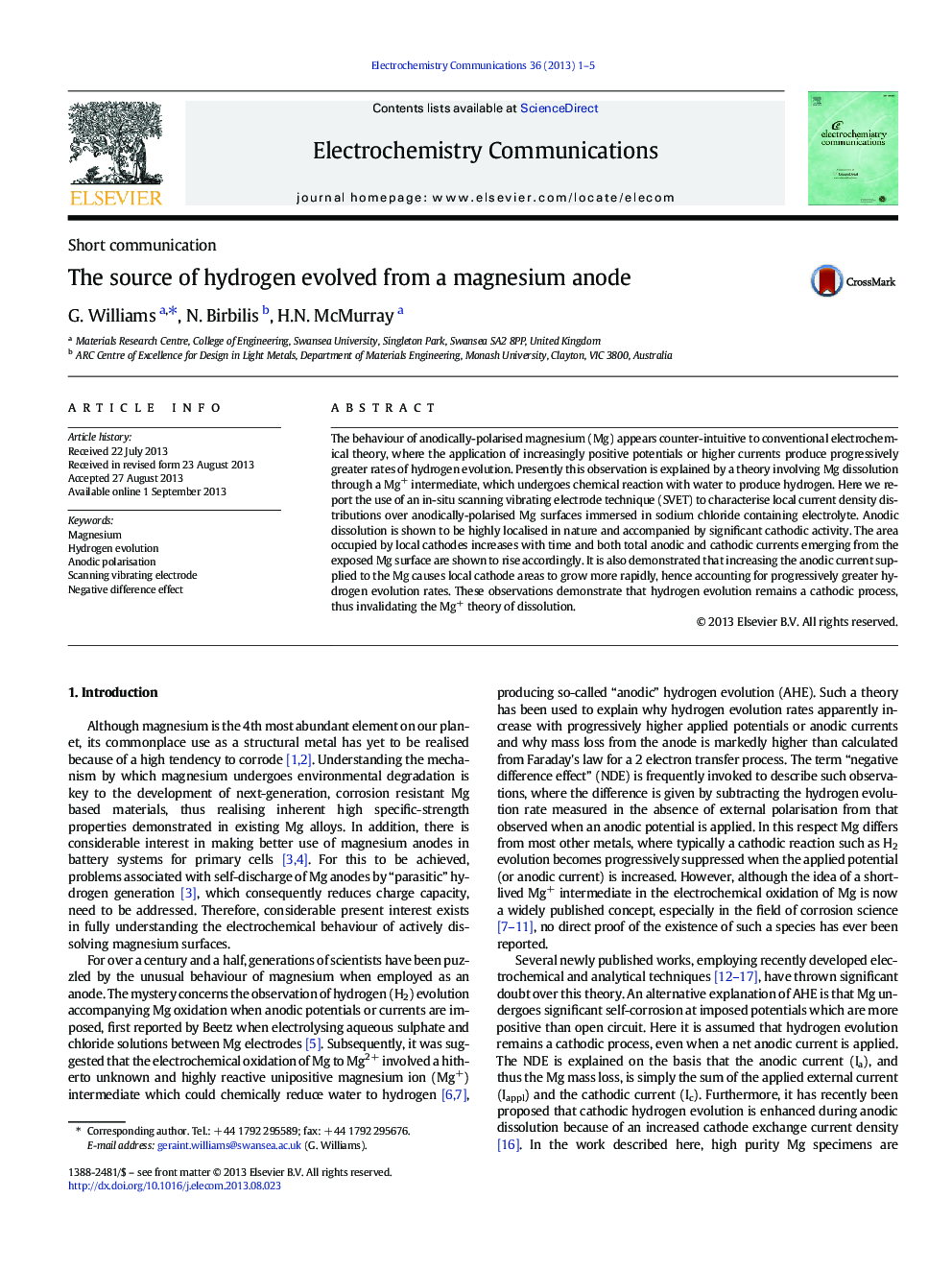| کد مقاله | کد نشریه | سال انتشار | مقاله انگلیسی | نسخه تمام متن |
|---|---|---|---|---|
| 179349 | 459346 | 2013 | 5 صفحه PDF | دانلود رایگان |

• Anodically polarised pure Mg surfaces studied by scanning vibrating electrode.
• Anodic dissolution is highly focal and accompanied by significant cathodic activity.
• Cathode area increases with time and grows more rapidly at higher applied current.
• Total anodic current increases with time as more cathode area becomes exposed.
• A mechanism based on an Mg+ intermediate is not required to explain the results.
The behaviour of anodically-polarised magnesium (Mg) appears counter-intuitive to conventional electrochemical theory, where the application of increasingly positive potentials or higher currents produce progressively greater rates of hydrogen evolution. Presently this observation is explained by a theory involving Mg dissolution through a Mg+ intermediate, which undergoes chemical reaction with water to produce hydrogen. Here we report the use of an in-situ scanning vibrating electrode technique (SVET) to characterise local current density distributions over anodically-polarised Mg surfaces immersed in sodium chloride containing electrolyte. Anodic dissolution is shown to be highly localised in nature and accompanied by significant cathodic activity. The area occupied by local cathodes increases with time and both total anodic and cathodic currents emerging from the exposed Mg surface are shown to rise accordingly. It is also demonstrated that increasing the anodic current supplied to the Mg causes local cathode areas to grow more rapidly, hence accounting for progressively greater hydrogen evolution rates. These observations demonstrate that hydrogen evolution remains a cathodic process, thus invalidating the Mg+ theory of dissolution.
Journal: Electrochemistry Communications - Volume 36, November 2013, Pages 1–5